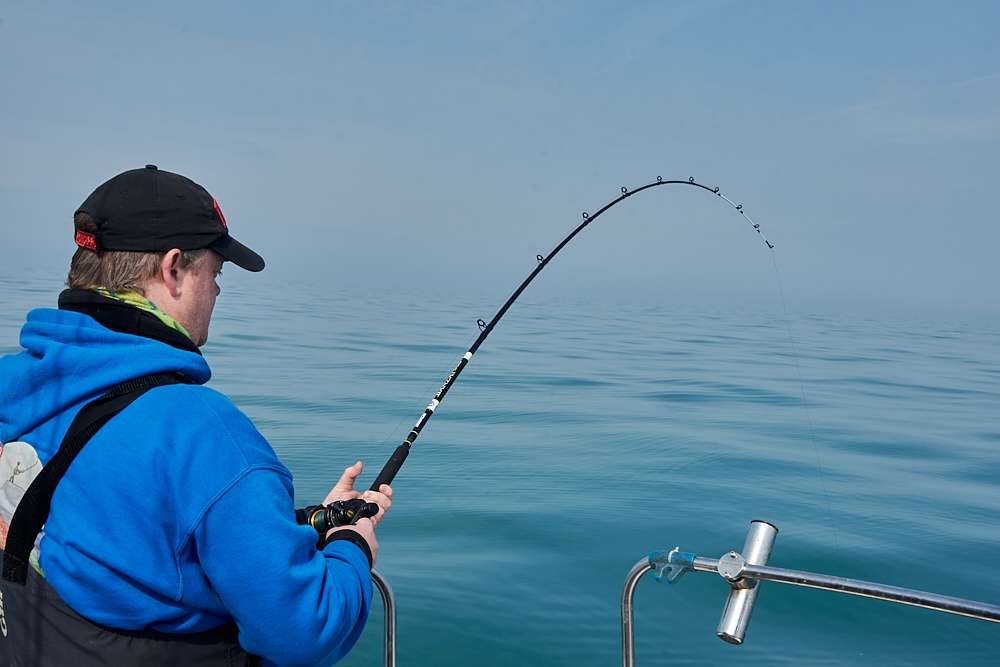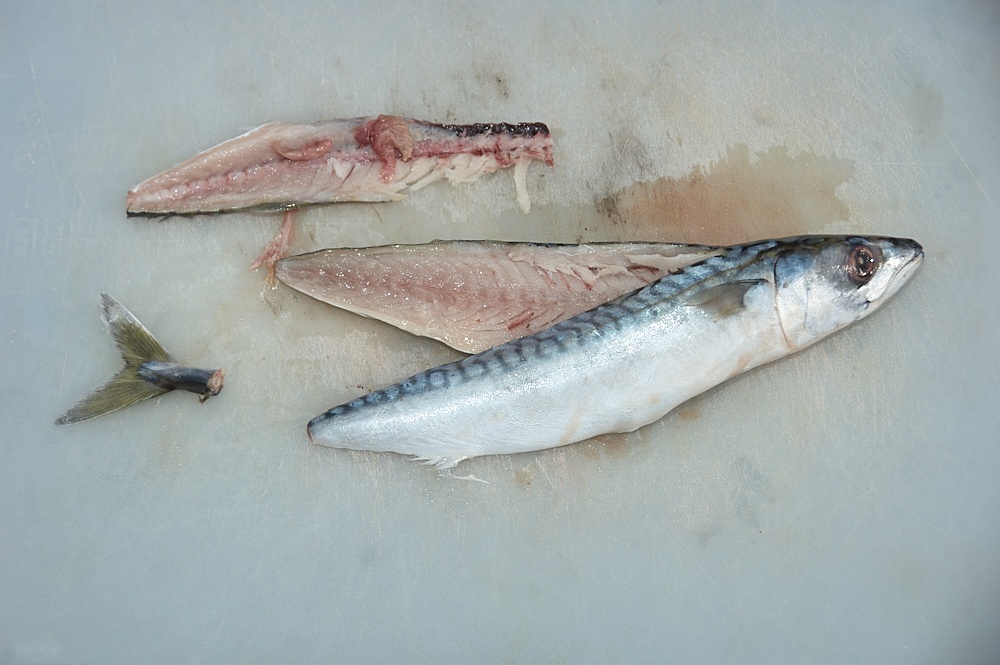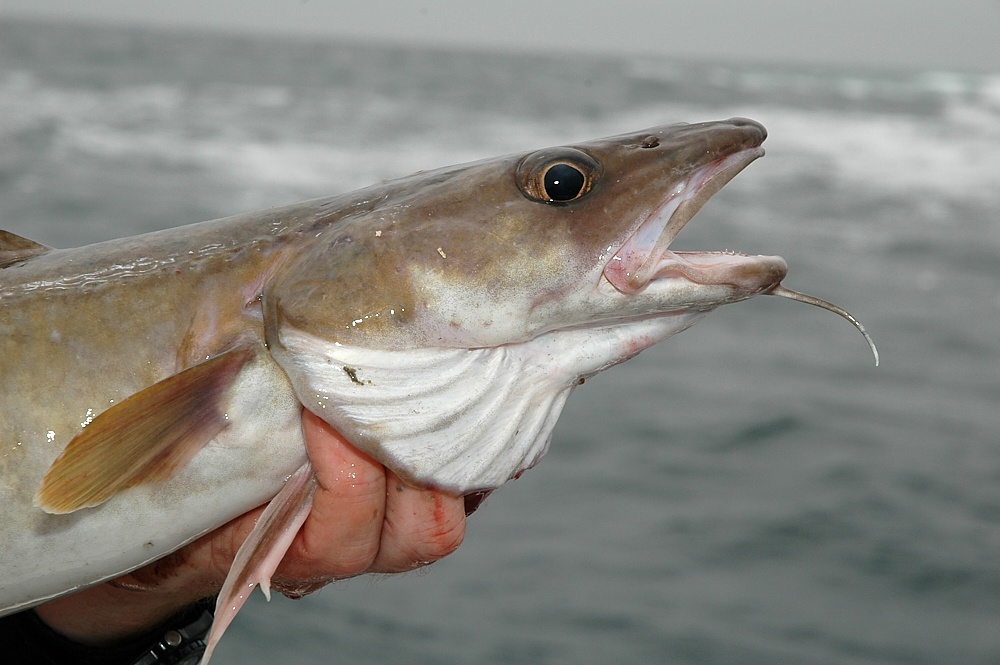Capable of growing to well over 30lbs in weight, ling average 12 to 20lbs over wrecks, with double figure fish common over reef ground. They have an elongated body designed to combat the tide, but also giving them the physical advantage to swim through tight holes and gaps to scare out bait fish sheltering in seabed structure.
They are armed with formidable teeth and are a smash and grab predator that prefers to take a moving target.

Season
Reef ling can be caught mostly throughout the whole year, but it’s the autumn and winter months that give the best fishing for both numbers and the bigger fish. It’s much the same over the wrecks with summer fish possible, but the best of the fishing is from September to March with the New Year period giving the best chance of a bigger fish.
Habitat
Basically, the rougher the seabed, the better a ling likes it. Reef ground needs to be a mixture of vertical rock walls, rising pinnacles and big rock formations. The ling use the rock and seabed structure to both break the flow of the tide, but also to hide behind and then pounce as smaller prey fish are pushed past by the tide. They also roam at will, looking to scare baitfish from their hidey holes. They will lay up in cracks and fissures in the seabed to ambush passing prey.
Furthermore, they also seek kelp weed beds as they use these for cover, plus the weed beds hold a lot of smaller baitfish, providing a consistent food supply.
Weather and Tides
It’s the sea state more than direct weather that is important. Ideally, you are looking for semi settled weather with light winds to give a slight sea with a gentle swell. This will mean that the boat drift is slower, and this gives you more time over the wreck. Combine this with smaller neap tides with a wind blowing against the flow of tide and the boat's speed will be down to a minimum, and you have mostly the perfect conditions.
Wreck dwelling ling work right in among the wreck itself but will move one side to the other, always preferring the downtide side of the wreck where the tide flow is reduced. This means they expend less energy. As the tide eases, they may lift in the water slightly to work the upper wreck structure, but this is a brief interlude before they go deep again.
You could argue that neap tides just starting to increase in height give you a slight advantage, but generally speaking, over a wreck, any smaller tide will give good fishing opportunities.
Tackle
With ling being found in deep water over rough reef ground and tight into wrecks, a 20/30lb Tronixpro Banzai Boat is needed to help bully fish away from the snags after the initial hook up. Match this to a medium-sized but compact multiplier holding 300yds of 30 to 40lb Tronixpro X8 Power Braid main line plus mono backing. To the main line add a length of Tronixpro Xenon Leader about twice the length of the rod to protect the braid from seabed and structure abrasion.

Ling are a greedy fish and like big baits but sit tight into the wreck and close to the seabed. This dictates a bait being fish hard on the seabed or literally just above. The best way to achieve this is by sliding a Tronixpro 27 cm Boat Boom onto the shock leader, followed by a 5 mm bead and tying on a size 1/0 Tronixpro SS2 Rolling Swivel. To this swivel’s free eye, tie on 3-feet of 75lb Tronixpro Xenon Leader and tie on another 1/0 swivel to this tag end of mono. To this swivel, crimp on 12-inches of 50lb Tronixpro Bite Wire, and then crimp a size 8/0 Tronixpro Hooligan to the last tag end of the wire. The lead weight is then attached to the swivel clip on the boom.
This is a simple rig that can be released at speed to the seabed in deep water with the minimal chance of tangling. It also presents the bait naturally, flowing trace style, tight to the seabed where the ling are feeding.
Baits
Ling are easy to feed, taking most small fish that come within their range. A fresh flapper mackerel with the backbone cut out, but the fillets left attached to the head, is deadly. It releases a lot of scent and blood, but also has movement, which ling will home in on. Other fish to try as bait are small pollack, whiting, herring, coalfish, pouting and poor cod.
Simply pass the hook point either through the bottom jaw of the bait and up through the top jaw to expose the hook point, or pass the hook sideways through the top jaw through the nostrils. Either presentation works well.

Other baits that will work are whole squid and sections of bluey.
Method
Drop the bait to the seabed, maybe pausing for a few seconds two or three times just to let the bait flutter below the lead weight to minimise the chance of tangling. When you feel the lead weight hit the seabed, lift the rod tip and wind in 3ft of line. Now work the rod tip up and down a couple of feet. This lift and drop action will be imitated by the bait and suggests a wounded, dying fish which the ling will not resist.
As a ling takes, you’ll feel a sudden resistance on the rod tip and then the weight of the fish. Reel in a few turns to tighten any slack line and just let the power of the rod pull the hook home. Then start pumping the fish up away from the seabed snags by lifting the rod then, as you drop it back down, wind in the regained line. Have the reel drag set fairly heavy, but light enough to give line against a powerful fish should it try to dive for the seabed.

Try to listen to the skipper as he shouts instructions as you are coming up to the reef or wreck. Aim to drop so that you’re fishing just before you get to the wreck, and then keep the bait in among the wreckage for as long as possible to target the better fish as you pass over it. Ling will also sit just on the downtide side of the wreck as you pass over it, but once you pass the wreck, retrieve and check your end tackle and rebait, so you’re ready for the next drift. The only exception to this is if, when the wreck sank, it either blew up or split in two. This action sees a large debris field spread over the seabed around the wreck, and this debris can hold ling some distance away from the main wreck.
Use a lead weight that is just heavy enough to maintain contact with the seabed. If you lift the rod tip and then release a little slack line, this allows you to drop back into the wreck as you pass over it, and this gives you a much greater chance of fish.


